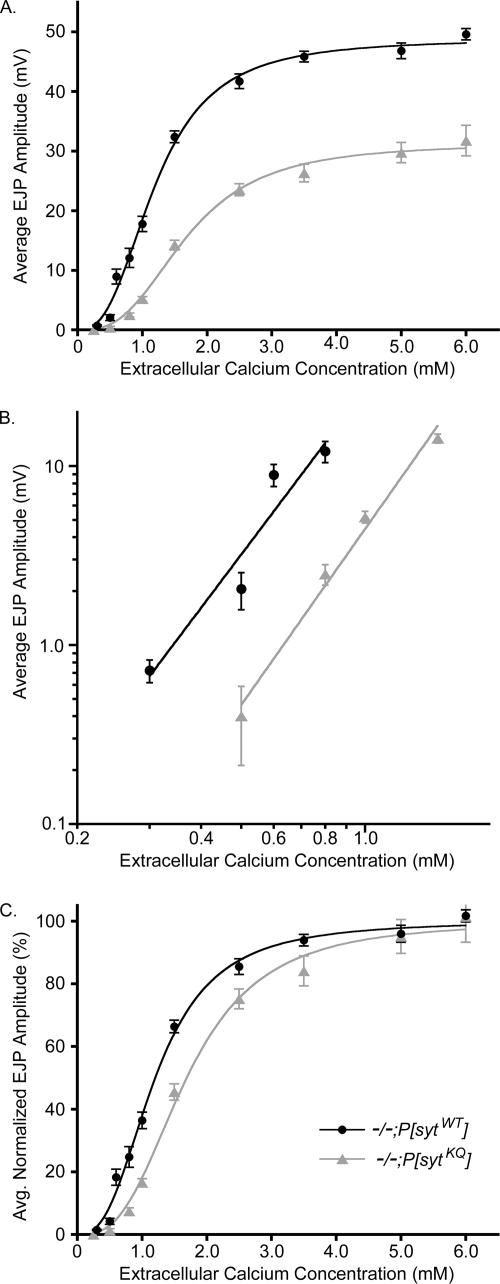Figure 3.
Calcium cooperativity of release is unchanged in the polylysine motif mutants, but the apparent calcium affinity and efficacy of release are decreased. EJPs were evoked by 0.05-Hz stimulation, and 10–15 sweeps were averaged for each fiber at each [Ca2+]. (A) EJP amplitudes at various extracellular Ca2+ concentrations for both polylysine motif mutants (gray triangles), and transgenic controls (black circles). For both genotypes, at 0.3–0.6 mM extracellular [Ca2+], n = 5–15 fibers; at 1.5 mM extracellular [Ca2+], n = 34–42 fibers; and at all other extracellular [Ca2+], n = 15–32 fibers. (B) Mean EJP amplitudes versus extracellular Ca2+ concentration were graphed on a double log plot. The slope (n) was determined by fitting the data points with linear regression lines (−/−;P[sytKQ]: n = 3.3, R = 0.99; −/−;P[sytWT]: n = 3.1, R = 0.95). (C) EJP amplitudes in A were normalized to the maximum value predicted by the Hill equation for each genotype and replotted to illustrate the shift in EC50 (−/−;P[sytKQ]: EC50 = 1.69 ± 0.08 mM; −/−;P[sytWT]: EC50 = 1.20 ± 0.05 mM). Error bars are SEM.

